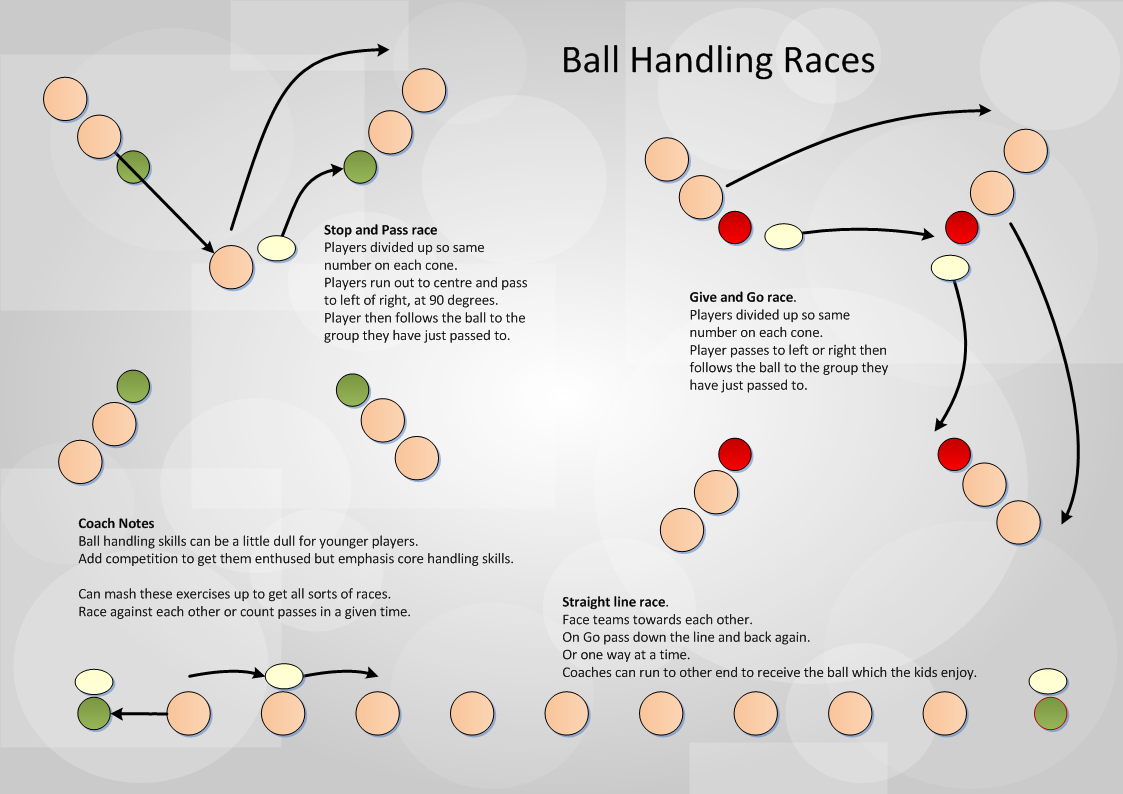Skill training is new content not addressed at all in Factors Affecting Performance. However, practice methods, feedback, and performance elements are all important background knowledge (you may also want to check out design a suitable plan for teaching beginners to acquire a skill through to mastery). This training method focuses on the development of skills specific to the athlete’s sport.
Skills are developed through the stages of skill acquisition using a number of different training methods that are made specific for each sport. Training methods include: drills (massed, distributed, etc practice methods), modified and small-sided games (2 on 2 basketball, half field etc), and games for specific outcomes (decision making, tactical awareness).
Students learn about:
- skill training
- drills practice
- modified and small-sided games
- games for specific outcomes, eg decision-making, tactical awareness.
Students learn to:
- analyse TWO of the training types by drawing on current and reliable sources of information to:
- examine the types of training methods and how they best suit specific performance requirements
- design a training program
- describe how training adaptations can be measured and monitored
- identify safe and potentially harmful training procedures.
Skill training program
Skill training programs are often varied and have many different segments to them. Often skill training is done using methods that replicate the specific sport. This means tennis is done individually on court, while football is done as a team on the field. However, this is not always the case. There are plenty of people who develop skills in 1-on-1 skill training sessions.
Skill training needs to be individualised in order to ensure improvements in performance. Skill training methods should match the players skill level and stage of skill acquisition, along with being age appropriate and further developing the skills needed in the sport.
Skill training focuses on technique of the skill and ways of applying the skill in competition. Together the aim is to improve performance through more consistent skill execution and better choice of skill application in competition.
A skill training program will have various different activities done in sequence focusing on particular skills. For example, after warming-up the athlete may complete 10 min of passing drills, before competing in a modified game that seeks to further develop passing skills such as 1 touch or 2 seconds with the ball. After this further drills on set plays may follow, that focus on decision making around the type of pass used (long, short, cut-out, lob, bounce etc). All skill training sessions should finish with a cool-down and session review.

This training is used to develop skills in the following ways:
- improve fundamental movements required in the sport
- individual developmental needs
- understanding the sport
- decision making
- communication
- performance under pressure [1]
Measuring skill training adaptations
Adaptations in skill are specific to the skill and require specific testing. Statistical analysis is often used to provide feedback on skill adaptations. If a player improves their goal shooting percentage, completed passed, or backhand winners then this indicates an improvement in the skill. Other measurements such as biomechanics analysis can be used to measure improvements in biomechanical efficiency of movement for example in running, tennis serve or bowling in cricket. The most often used measures are feedback of results and aesthetics of skill execution.
Safety in skill training
There are a variety of safety aspects for training, the most fundamental safety aspect is an adequate warm-up. Other aspects of the athlete’s level of physical preparation (skill and technique, physical fitness etc) are also important for safety in skill training.
Past HSC PDHPE Exam Questions (2012-2022)
2018 Question 31
(a) Explain both safe and potentially harmful training procedures related to TWO
training types. 8 marks
2019 Question 31
(a) (i) Describe TWO different types of training methods that are best suited to the performance requirements of an athlete in a particular sport. 4 marks
(ii) How can the training adaptations for the athlete identified in part (i) be measured and monitored? 4 marks
[1] edited from Outcomes 2 HSC Course 4th Edition
